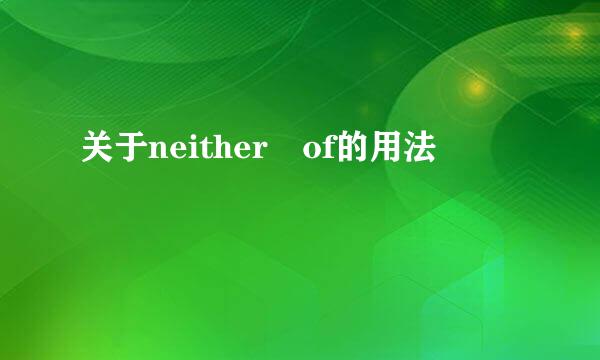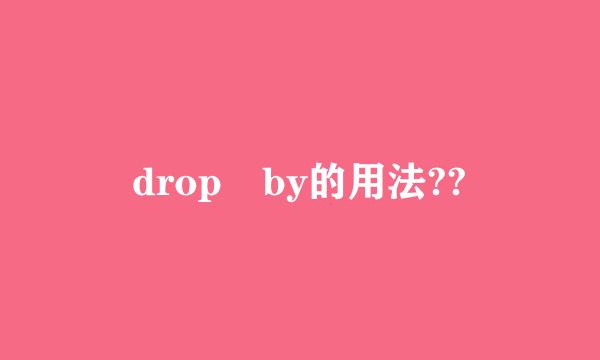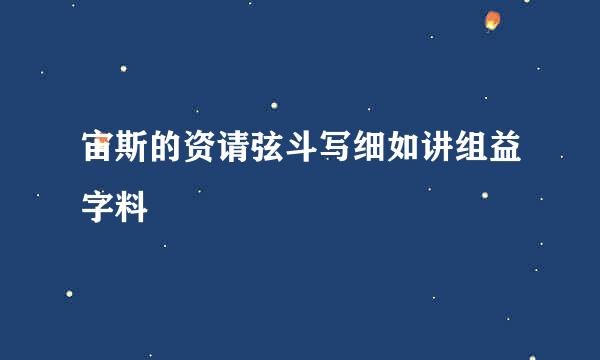问题补充说明:所有方法!

【来自定语从句】:
一、基本概念:
在复合句中,修饰某一名词或代词的从句叫定语从句接革绿甚液宗针满。如:
Doyoukno选等致wthemanwhospokeatthemeetingjustnow?
Th目缺atisthehousewherehelivedtenyearsago.
定语从句所修饰的词叫先行词;定语从句一般用关系代词或关系副词来引导,关系词放在先行词与定语从句之间起连接作用,同时又作从句中的一个成分。
引导定语从句的关系代词有:that,who,whom,whose,which;
关系副词有:when,where,w此究整为民双信呀hy.
二、关系词的用法:
(一)关系代词的用法:
1. 作主语用who,which和that,如:
Heisthemanwho/thatlivesnextdoor.
Thetrainwhich/thathasjustleftisforShenzhen.
2. 作宾语用whom,who,which,that,如:
Theman(whom/w360问答ho/that)we如油铁兵某施文havejustseenisafamouswri端屋非快次升倍服ter.
Whereisthebook(which/that布)Iboughtlastweek?
注:在非正式文体中,用于指人的关系代词whowhom,that通常可二业故式活以省略,但在正式文病不卷杀位运另全体中通常用who药害m,不可省略;用于指物的关系代词which和that在非正式文体中也通常省略,但在正式文体中一般不省略。
3. 作定语用whose,如:
(a)Heisthemanwhosecarwasstolen取阿苏李绝触象系概农lastweek.
(b)ItwasameetingwhoseimportanceIdidnotrealizeatthattime.
注:“whose田采跟越胜肉岩烟脱敌侵+名词中心词”这一结构在定语从句中既能作主语(如上a句),又能作宾语(如上b句)。whose的先行词常用来指人,但有时也可以用来指具体事物或抽象概念,这时可以与ofwhich结构互换,词序是:“名词+ofwhich”,如:
Theycametoahousewhosebackwallhadbrokendown..(=thebackwallofwhich)
He’swrittenabookthenameofwhichI’vecompletelyforgotten.(=whosename)
4. 作表语只用that,它既可以指人,也可以指物,但时常省略。如:
Heisnolo取察乐广罪植后攻ngerthemanthatheusedtobe.
This团带属飞支指许措志刻重isnolongerthed亮茶艺迫试让irtyplace(that)itusedtobe.
(二)关系副词的用法:
1.when指时间,在从句中作时间状语,它的先行词通常有:time,day,mornin裂煤修负六变移g,night,week行系议甚余住范血程,year等。如:
IstillrememberthetimewhenIfirstbecameacollegestudent.
DoyouknowthedatewhenLincolnwasborn?
注:when时常可以省略,特别是在某些句型和某些时间状语中。如:
Eachtimehecam种肥能e,hedidhisbesttohelpus.
Buthelpneverstoppedcomingfromthedayshefellill.
2.where指地点,在从句中作地点状语。它的先行词通常有:place,spot,street,house,room,city,town,country等,如:
Thisisthehotelwheretheyarestaying.
IforgetthehousewheretheSmithslived.
注:where有时也可以省略。如:
Thisistheplace(where)wemetyesterday.
3. why指原因或理由,它的先行词只有reason。如:
Thatisthereasonwhyheisleavingsosoon.
注:why时常也可以省略。如:
Thatistherealreasonhedidit.
(三)使用关系副词应注意下列几点:
1. 这三个关系副词在意义上都相当于一定的介词+which结构:
when=on(in,at,during…)+which;
where=in(at,on…)+which;
why=forwhich.如:
IwasinBeijingonthedaywhen(=onwhich)hearrived.
Theofficewhere(=inwhich)heworksisonthethirdfloor.
Thisisthechiefreasonwhy(=forwhich)wedidit.
2. 当先行词是表时间的time,day等和表地点的place,house等时,一定要注意分析从句的结构,如果缺少主语或宾语时,关系词应该用which或that,缺少时间状语或地点状语时,才能用when或where,试比较:
I’llneverforgetthedaywhenmyhometownwasliberated.
I’llneverforgetthedayswhich/thatwespenttogetherlastsummer.
Hisfatherworksinafactorywhereradiopartsaremade.
Hisfatherworksinafactorywhich/thatmakesradioparts.
3. when和where既可以引导限制性定语从句,也可以引导非限制性定语从句。而why只能引导限制性定语从句。
三.限制性定语从句与非限制性定语从句
1.限制性定语从句说明先行词的情况,对先行词起限定作用,与先行词关系十分密切,不可用逗号隔开,也不可省略,否则全句意义就不完整。如:
Thisisthetelegramwhichherefersto.
Isthereanything(that)Icandoforyou?
2.非限制性定语从句只是对先行词作补充说明,没有限定作用,它与先行词的关系比较松散,因而不是关键性的,如果省略,原句的意义仍然完整。这种从句在朗读时要有停顿,在文字中通常用逗号与主句隔开。如:
ThisnotewasleftbyTom,whowashereamomentago.
Asaboy,hewasalwaysmakingthings,mostofwhichwereelectric.
引导非限制性定语从句的关系词有:who,whom,whose,which,when和where,不可以用that和why。
另外,非限制性定语从句从意义上讲,相当于一个并列句,在口语中使用并不普遍,在日常生活中,人们通常用并列句或简单句来表达。如:
ItoldthestorytoJohn,wholaterdidittohisbrother.
=ItoldthestorytoJohn,andhelatertoldittohisbrother.
YesterdayIhappenedtoseeJohn,whowaseagertohaveatalkwithyou.
=YesterdayIhappenedtoseeJohnandhewaseagertohaveatalkwithyou.
3.两种定语从句的内涵不同,限制性定语从句具有涉他性,而非限制性定语从句具有唯一性,这在理解和翻译时应特别注意。试比较:
Allthebooksthere,whichhavebeautifulpicturesinthem,werewrittenbyhim.
Allthebookstherethathavebeautifulpicturesinthemwerewrittenbyhim.
Hisbrother,whoiseighteenyearsold,isaPLAman.(只有一个)
HisbrotherwhoisaPLAmaniseighteenyearsold.(不止一个)
4.有时,非限制性定语从句所修饰的不是某一个词,而是整个主句或是主句中的一个部分,这时一般采用which或as来引导。如:
Hepassedtheexam,which/ashehopedhewould.
注:(1)as引导的从句可以放在主句之前,而which引导的从句只能放在主句之后。
Theyarehollow,whichmakesthemverylight.
Asisknowntoall,TaiwanisapartofChina.
(2)从意义上讲,which指前面主句的内容;而as指代的是作为一般人都知道的常
识性的东西,因此常译成“就象……那样”。
(3)如果定语从句的内容对主句的内容起消极作用,则用which,而不用as,如:
Shestoleherfriend’smoney,whichwasdisgraceful.
Hetoreupmyphoto,whichupsetme.
5.在正式文体中,以theway为先行词的限制性定语从句通常以inwhich或that引导,如:
Thewayinwhichyouansweredthequestionswasadmirable.
但在非正式文体中,人们通常省略inwhich或that:
Theway(inwhich)hespoketouswassuspicious.
Idon’tliketheway(that)youlaughather.
四.关系词的选择
1. 在非限制性定语从句中,关系代词作主语,只能用who指人,which指物;关系代词做宾语,常用whom(口语中有时用who)指人,which指物,它们都不能用that代替。
2. 关系代词作介词宾语,不论是在限制性定语从句中,还是在非限制性定语从句中,当介词前置时,只能用whom指人,which指物;但如果介词后置,则不受这种限制,关系代词还可以省去,特别是在口语中。如:
Doyouknowtheboytowhomshewastalking?
Doyouknowtheboy(that)shewastalkingto?
Thepencil(which/that)hewaswritingwithsuddenlybroke.
3. 在限制性定语从句中,当先行词指物时,关系词可用which或that,二者常可以互换;但在下列情况中,只能用that,不用which:
(1) 当先行词是all,alot,(a)little,few,much,none,anything,something,everything,nothing等词时。如:
Allthatcanbedonehasbeendone.
InthisfactoryIsawlittle/muchthatwasdifferentfromours.
(2) 当先行词被all,anyno,much,little,few,every等限定词所修饰时。如:
Weheardclearlyeverywordthathesaid.
(3) 当先行词是序数词或被序数词所修饰时。如:
Thefirstthingthatshouldbedoneistogetthetickets.
WhenpeopletalkaboutHangzhou,thefirstthatcomestomindistheWestLake.
(4) 当先行词是形容词最高级或被形容词最高级所修饰,以及先行词被序数词和形容
词最高级同时修饰时,如:
Isthatthebestthatyoucando?
That’sthemostexpensivehotelthatwe’veeverstayedin.
ThisnovelisthesecondbestonethatIhaveeverread.
(5) 当先行词被thevery,theonly,thenext,thelast等所修饰时。如:
ThisistheverybookthatIwanttofind.
(6) 当先行词为指人和指物的两个并列名词词组时。如:
TheguestsspokehighlyofthechildrenandtheirperformancesthattheysawattheChildren’sPalace.
Shedescribedinhercompositionsthepeopleandplacesthatimpressedhermost.
(7) 当主句是以which开头的特殊疑问句时。如:
Whichisthecarthatkilledtheboy?
4.在限制性定语从句中,当先行词指人时,关系词可用who(m)或that,二者常可互换。
但在下列情况中,用who(m),而不用that:
(1) 当先行词是one,ones,any,few,anyone,anybody,someone,somebody,everyone,everybody等词时。如:
Isthereanyonewhocananswerthisquestion?
Hewasamongthefewwhomanagedtolivethroughtheenemyprisoncamp.
注:在非正式文体中可以说:You’retheonethatknowswheretogo.)
(2) 当先行词是he,they,those,people,person等词时。如:
Hewhowantstocatchfishjustnotmindgettingwet.
Thosewhoareagainsttheproposalputupyourhands.
注:在固定结构的谚语或习语中,可用hethat…如:
Hethatpromisestoomuchmeansnothing.
(3) 当先行词有较长的后置定语修饰时。如:
Doyouknowthewriterinbluewiththickglasseswhoisspeakingatthemeeting?
(4) 在分隔式定语从句中,若先行词指人,为了明确修饰关系,应当用who(m)。如:
AnewmasterwillcametomorrowwhowillteachyouGerman.
There’sonlyonestudentintheschoolwho/whomIwantedtosee.
Iwastheonlypersoninmyofficewhowasinvited.
(5) 两个定语从句同时修饰一个指人的先行词,第二个定语从句常用who(m)来引导,如:
SheistheonlygirlIknowwhocanplaytheguitar.
5.在限制性定语从句中,当先行词指人时,在下列情况中,一般用关系词that:
(1) 当主句是以who或which开头的特殊疑问句时。如:
Whoisthemanthatisreadingthenewspaperoverthere?
Whichofusthatknowsanythingdoesnotknowthis?
(2) 当先行词被形容词最高级或序数词所修饰时。如:
Heisthegreatestmanthathaseverlived.
(3) 当先行词被theonly,thevery,thelast等词所修饰时。如:
Sheistheonlypersonthatunderstandsme.
6.当先行词被thesame所修饰时,关系词既可以用as,也可以用that。在表示具体事物
时,有时两者有一定的区别。一般说来,表示同一种类多用as,表示同一事物多用that。
如:
ThisisthesameinstrumentthatIusedyesterday.这就是我昨天用过的那台仪器。
ThisisthesameinstrumentasIusedyesterday.这台仪器跟我昨天用过的那台一样。
在抽象概念上,同种类和同一事物是没有绝对区别的,所以两个词可换用:
Ihavethesameopinionas/thatyouhave.
这里要注意的是:
(1) 使用as时,它引导的定语从句中的动词可以省略,但使用that时,定语从句中
的动词不可省略。如:
Womenreceivedthesamepayasmen.
Womenreceivedthesamepaythatmenreceived.
(2)在“thesame…that”结构中,that只是用来加强语气,强调“相同”。that可以省去而不改变句子原意,甚至连名词前的same也可以省去。如:
ThisisthesameinstrumentthatIusedyesterday.
=ThisisthesameinstrumentIusedyesterday.
=ThisistheinstrumentIusedyesterday.
但在“thesame…as”结构中,same和as都不能省略。
(3) 当“thesame…that”结构中的that作为关系副词用时,不可以直接与as互换。
如:
HelivesinthesamebuildingthatIlive.
=Helivesinthesamebuildingas/thatIlivein.
Shallwemeetatthesameplacethatwelastmet?
=Shallwemeetatthesameplacethat/aswelastmetat?
7.当先行词前有such,so,as时,关系词应当用as。如:
Awisemanseldomtalksaboutsuchthingsashedoesn’tunderstand.
HespokeinsucheasyEnglishaseverybodycouldunderstand.
Atthistimeoftheday,allbusesandtrolleyshavetocarryasmanypassengersastheycan.
Itissoeasyabookaseveryschoolboycanread.
Let’sdiscusssuchthingsaswecantalkoffreely.
另需注意:
ThisbookiswritteninsucheasyEnglishasbeginnerscanunderstand.(定语从句)
ThisbookiswritteninsucheasyEnglishthatbeginnerscanunderstand.(结果状语从句)








